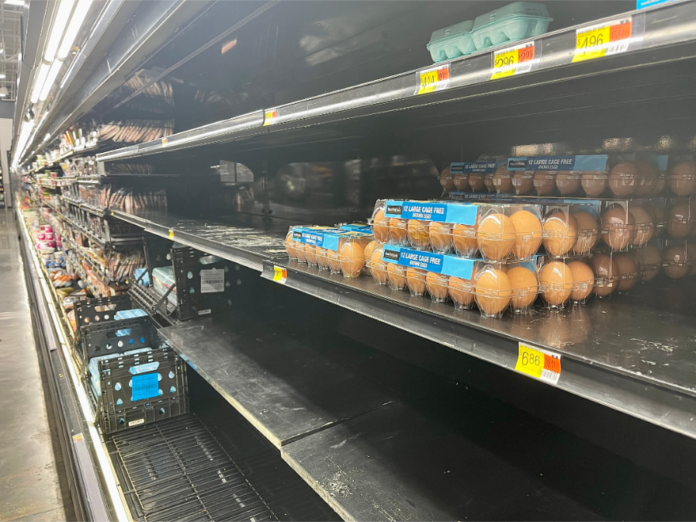
The price of eggs in California has escalated by 70%, with bird flu and onerous cage-free mandates as the culprits.
At a Glance
- Egg prices have surged to $8.97 per dozen due to avian influenza.
- Bird flu drastically reduced laying hens during high-demand seasons.
- Retailers implemented egg purchase limits amidst supply disruptions.
- National egg production and market stability expected by mid-2025.
The Cost of Eggs Skyrockets
Egg prices in the Golden State have soared a staggering 70% within the past month, with the average cost per dozen hitting an eye-watering $8.97. This dramatic increase comes as California navigates the twin challenges of a severe bird flu epidemic and the stringent regulations imposed by Proposition 12. Such conditions were hardly optimal during peak demand seasons like the holidays when families gathered, needing more eggs than usual. They are left with an expensive grocery bill in the process.
Both consumers and small businesses are feeling the pinch. Small business owners, particularly in the food industry, are struggling to source eggs amid these drastic price hikes, putting a strain on their profitability and operations. As a response, major retailers such as Whole Foods and Safeway have placed strict purchase limits on egg products to manage the reduced supply. This trend has not only strained the pockets of consumers but changed their purchasing habits, highlighting the extraordinary challenges faced by California’s unique market.
Egg prices in California hit $8.97 per dozen from bird flu and supply woes. Restaurants and consumers feel the pinch. Dive into the reasons behind this surge.
Read more: https://t.co/PvkDJEHTum pic.twitter.com/E3oAmHcmlv
— Los Angeles Magazine (@LAmag) January 7, 2025
Blame the Bird Flu and Bold Legislation
California faces an unavoidable predicament. The bird flu outbreak has affected 19 commercial and three backyard flocks, totaling 4.6 million birds. The state also buckles under the constraints of Proposition 12, a law mandating cage-free standards that further constricts the supply. Critics, including farmers like Frank Hilliker, argue that these regulations have weakened the market’s resilience against price spikes by eliminating access to cheaper eggs.
“We as egg farmers are doing everything we can to mitigate the circumstances of avian influenza” – Frank Hilliker
California, with its heightened biosecurity protocols, continues to fight the spread of the bird flu. Despite their efforts, the national egg-laying population is anticipated to drop below 300 million hens, marking a stark downturn since the 2022 bird flu debacle. Experts, such as Daniel Sumner from UC Davis, emphasize the impact these factors have on the market—an intersection of environmental conditions and restrictive policies leading to ballooning costs for this staple good.
Why It Matters to the Nation
Consumers ultimately bear the brunt of this burgeoning financial burden. As the U.S. commercial egg production remains subdued due to these virulent outbreaks, some experts predict this crisis might persist until mid-2025, assuming the avian influenza does not make a return. Meanwhile, national prices, though rising, are yet to stabilize, pointing to an unsettling period of uncertainty for consumers who once took affordable eggs for granted.
This extended predicament leaves policymakers under intense pressure to address these economic impacts and ensure food affordability remains. The nation may soon demand serious reconsideration of policies that compromise our American values—especially when they make little common sense. Until then, the unpredictability persists, leaving many families wondering when a carton of eggs will stop breaking their wallets.
Sources:
https://www.theepochtimes.com/us/california-egg-prices-rise-70-percent-in-one-month-5787283
https://www.axios.com/2025/01/03/egg-prices-2025-bird-flu-avian-influenza
https://www.newsweek.com/eggs-prices-surge-california-economy-2008282






















